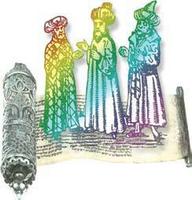The Book of Esther – a Miracle Inside
At the end of The Book of Esther, the villain is sentenced (well, kind of) and hanged; but did we really have to go through all the scary stuff leading up to it?
The Book of Esther features four leading characters, which are really two: There is the King, Ahasuerus (whose name is much more speaker-friendly in Hebrew), the Queen, Esther, and the two guys who are making all the fuss, Mordechai (the good) and Haman (the bad). (The original script did include an ugly fellow, but the authors of The Book of Esther predicted a huge plagiarism suit by Hollywood tycoons so they slightly modified the storyline.)
In Hebrew, The Book of Esther is called Megilat Ester. Megilat comes from the word Gilui (disclosure), and Ester comes from the word Hester (concealment). In other words, The Book of Esther is about disclosing what is concealed.
But let’s take this disclosure one step at a time. First, we must remember that the wisdom of Kabbalah explains that in the whole of reality there are only the Creator and a creation that perceives Him. The Bible and all other ancient Hebrew texts, are actually written in different “languages” that explain the same spiritual concepts as the wisdom of Kabbalah.
In The Book of Esther, the King is the Creator, obviously, but none of the other protagonists is a separate entity; actually, each character is an aspect of the Creator’s single creation. This is a key concept to remember because it shifts everything from a moralistic tale about how the good eventually defeats the bad, to an allegory about our personal relationship with the Creator. According to the Kabbalah, Esther, Haman, and Mordechai are all within us, and the Creator is the attribute of benevolence that we need to acquire if we want to unite with Him and be happy.
The story begins with establishing the character of the good guy, Mordechai. He discovers that two of the king’s servants are plotting to assassinate the king, and alerts him of the danger. But the king’s reaction is far different from what we expect; he actually promotes Haman instead of Mordechai!
In our story, Esther represents the collective soul, the whole of creation. The two rivals, Haman and Mordechai, represent the soul’s two inclinations—the evil inclination, egoism (Haman), and the good inclination, altruism (Mordechai).
These roles are the reason why the king promotes Haman, instead of Mordechai: To choose altruism and thus unite with the Creator, one must first realize that egoism is bad. We are made of a desire to receive pleasure. To make the shift to altruism, we must realize that egoism is bad for us, and subsequently want to change it. But the only way we can want to change it is if we evidently see that it is bad for us. How is that done? By giving Haman (egoism) a bait he cannot resist, which will expose his true nature.
For this reason, up to the very end, Haman is given more and more power until he cannot resist the temptation; when he is asked, “What shall be done unto the man whom the king delights to honor?” he takes the bait:
“For the man whom the king delights to honor, let royal apparel be brought which the king useth to wear, and the horse that the king rideth upon, and on whose head a crown royal is set; and let the apparel and the horse be delivered to the hand of one of the king's most noble princes, that they may array the man therewith whom the king delights to honor, and cause him to ride on horseback through the street of the city, and proclaim before him: Thus shall it be done to the man whom the king delights to honor.”
At the heart of The Book of Esther lies the deepest principle of how to achieve spirituality: to reveal the Creator, be prepared to first reveal yourself. Creation, of which we’re all part, is made of one thing only—a desire to receive pleasure. The Creator is also made of one thing only: the desire to give pleasure, the exact opposite of creation. If you think of the Creator and creation as two people, it’s as if one loves everything that the other hates. No wonder they can’t communicate. If we want to communicate, we have to be like the Creator, at least to some extent. The more we are like Him, the better will be our communication with Him.
The story of The Book of Esther encompasses the entire path of spiritual progress, one that all of us will experience. The beauty of the story is that we don’t have to understand it all at once. These few pages in the Bible can be read again and again, each time revealing new secrets. All we need to take with us is that simple principle: to reveal the Creator, be prepared to reveal yourself, first. Every time we want to know more about the Creator, He will show us who we are, instead. But this is not because He is hiding; it’s because we have to discover the Haman within us before we discover the greatness of Mordechai, who is the one who really loves the Creator.
Working this way guarantees not only that we will reveal the Creator, but the rewards that Mordechai received, as well: “Then took Haman the apparel and the horse, and arrayed Mordecai, and caused him to ride through the street of the city, and proclaimed before him: 'Thus shall it be done unto the man whom the king delights to honor.” Moreover, Mordechai’s final reward is Haman’s greatest wish: “And the king took off his ring, which he had taken from Haman, and gave it unto Mordecai.”
So the good, the bad, and the beautiful (queen) are all within us. To discover them, just ask (of the Creator) and you’ll receive.
